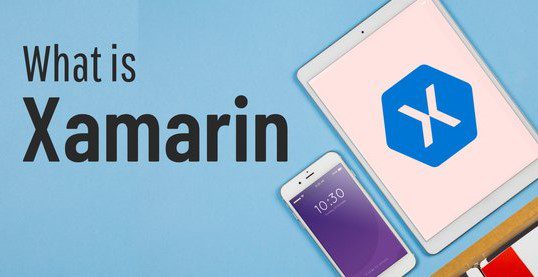- Home
- App Development Services
- Xamarin end of support for iOS...

In the dynamic world of mobile app development, Xamarin has been a reliable companion for developers, allowing them to create cross-platform applications efficiently. Leveraging the power of the .NET framework, Xamarin has facilitated the development of applications for both iOS and Android platforms simultaneously, saving time and effort for developers.

Xamarin
Xamarin has been a game-changer for developers, providing a single codebase for building applications compatible with both iOS and Android. This not only streamlined the development process but also allowed for easier maintenance and updates. However, like all good things, Xamarin’s support for iOS and Android is reaching its end.
In a recent announcement that sent ripples through the developer community, Xamarin declared the end of support for both iOS and Android platforms. This decision has left developers with mixed feelings, as they now face the challenge of adapting to a new framework or finding alternatives that align with their project requirements.
One of the immediate concerns for developers is the migration process. Moving away from Xamarin means transferring the existing codebase to a new framework, which can be a complex and time-consuming task. This migration challenge raises questions about the compatibility of existing features and functionalities.
With the end of support, Xamarin will no longer provide security updates, leaving applications vulnerable to potential threats. Developers must now prioritize enhancing the security of their apps or consider alternative frameworks that are actively supported and updated.
The performance of an application is a critical factor in user satisfaction. Developers need to assess how the transition will affect the performance of their apps. Will the new framework maintain or enhance performance, or are there potential drawbacks that could impact the user experience?
Google’s Flutter is gaining popularity for its ease of use and impressive performance. It allows developers to create natively compiled applications for mobile, web, and desktop from a single codebase.
Developed by Facebook, React Native enables the creation of cross-platform apps using JavaScript and React. It offers a large community and a vast selection of libraries.
For those who prefer a more native approach, NativeScript allows the use of JavaScript or TypeScript to build native apps, providing direct access to native APIs and UI components.
When selecting an alternative to Xamarin, developers must consider factors such as ease of migration, community support, performance, and the specific requirements of their projects. Each alternative has its strengths, and the right choice depends on the individual needs of the development team.
Smooth transition strategies are crucial to minimizing disruptions during the shift from Xamarin to a new framework. This includes comprehensive planning, adequate testing, and effective communication with stakeholders.
Before initiating the transition, developers should ensure that a robust backup of the existing codebase is in place. Data migration processes must be carefully planned to prevent any loss or corruption of essential information.
Thorough testing is indispensable to guarantee a seamless transition. Developers should rigorously test the new framework to identify and resolve any compatibility issues, ensuring the functionality and performance of the application are not compromised.
Developers need to be aware of the timeline for Xamarin’s end of support to strategize their transition effectively. Having a clear understanding of when support ends allows for better planning and allocation of resources.
The announcement of Xamarin’s end of support has sparked discussions within the developer community. Forums, social media, and online communities are buzzing with conversations about the best alternatives, migration strategies, and shared experiences. Understanding the sentiments and insights of other developers can be valuable in navigating this transition.
As we bid farewell to Xamarin’s support for iOS and Android, it’s essential to acknowledge its legacy and contributions to the developer community. Xamarin has played a pivotal role in simplifying cross-platform development, leaving an indelible mark on the mobile app landscape.
In conclusion, the end of support for Xamarin on iOS and Android marks a significant shift in the mobile app development landscape. Developers must now carefully evaluate their options, considering the implications, challenges, and opportunities presented by this change. The choice of an alternative framework requires thoughtful consideration, and a well-planned transition strategy is key to a successful migration.
© 2013 - 2024 Foreignerds. All Rights Reserved